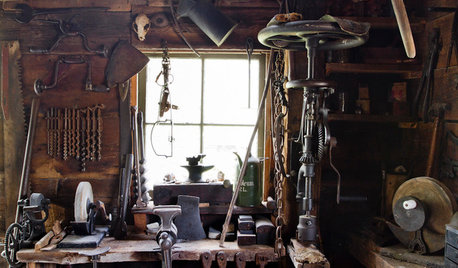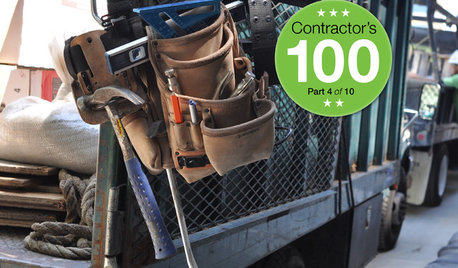Belt for Craftsman
bus_driver
9 years ago
Related Stories

HOUZZ TOURSHouzz Tour: An Old-World Bungalow Earns a New Plan
With a hundred years under its belt, this New Hampshire home deserved the loving additions and modern updates made by its architect owner
Full Story
ARCHITECTURERoots of Style: See What Defines a Craftsman Home
Charming features and intimate proportions have made Craftsman houses an American favorite. See their common details and variations
Full Story
DECORATING GUIDESSo Your Style Is: Tropical
Easygoing and natural with an exotic allure, rooms designed with a tropical feel exude warmth and graciousness
Full Story
ARCHITECTURERoots of Style: Prairie Architecture Ushers In Modern Design
Twentieth-century Midwestern architects gave us broad-shouldered homes inspired by the landscape and modern times
Full Story
BACKYARD STUDIOSMaster Builder Crafts a Dream Workshop
A design-build firm owner uses an economical building method for his large shed and finishes it off nicely to blend into the scenery
Full Story
ORGANIZINGDo It for the Kids! A Few Routines Help a Home Run More Smoothly
Not a Naturally Organized person? These tips can help you tackle the onslaught of papers, meals, laundry — and even help you find your keys
Full Story
ARCHITECTURERoots of Style: Do You Live in a Minimalist Traditional House?
Cottages, bungalows, farmhouses ... whatever you call them, houses in this style share several characteristics. See how many your house has
Full Story
GREAT HOME PROJECTSWhat to Know Before Refinishing Your Floors
Learn costs and other important details about renewing a hardwood floor — and the one mistake you should avoid
Full Story
MATERIALSAre You a Maker? Show Us Your Favorite Tool or Material
Houzz Call: A tool or material can be a maker’s best friend. We’d like to see your favorite — and what it helps you achieve
Full Story
REMODELING GUIDESContractor Tips: What Your Contractor Really Means
Translate your contractor's lingo to get the communication on your home project right
Full StorySponsored






mownie
rcbe
Related Professionals
Barrington Hills Landscape Architects & Landscape Designers · Glassmanor Landscape Architects & Landscape Designers · Quincy Landscape Architects & Landscape Designers · Mount Wilson Landscape Architects & Landscape Designers · Buford Landscape Contractors · Wakefield Landscape Contractors · Crystal Landscape Contractors · Lemont Landscape Contractors · Midland Landscape Contractors · Mission Landscape Contractors · Quartz Hill Landscape Contractors · Houston Window Contractors · Naples Window Contractors · Seminole Window Contractors · Verona Window Contractorsbus_driverOriginal Author
tomplum
rcbe
User
mownie
User
tomplum
User
bus_driverOriginal Author
User
bus_driverOriginal Author
bus_driverOriginal Author
User
tomplum
bus_driverOriginal Author
mownie
bus_driverOriginal Author